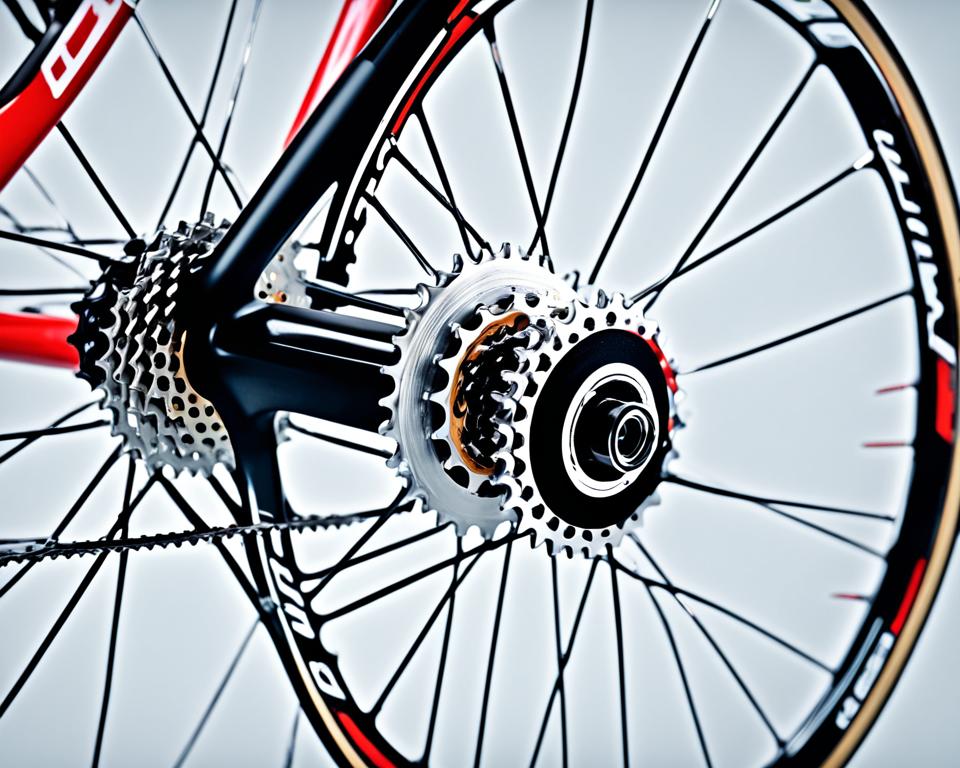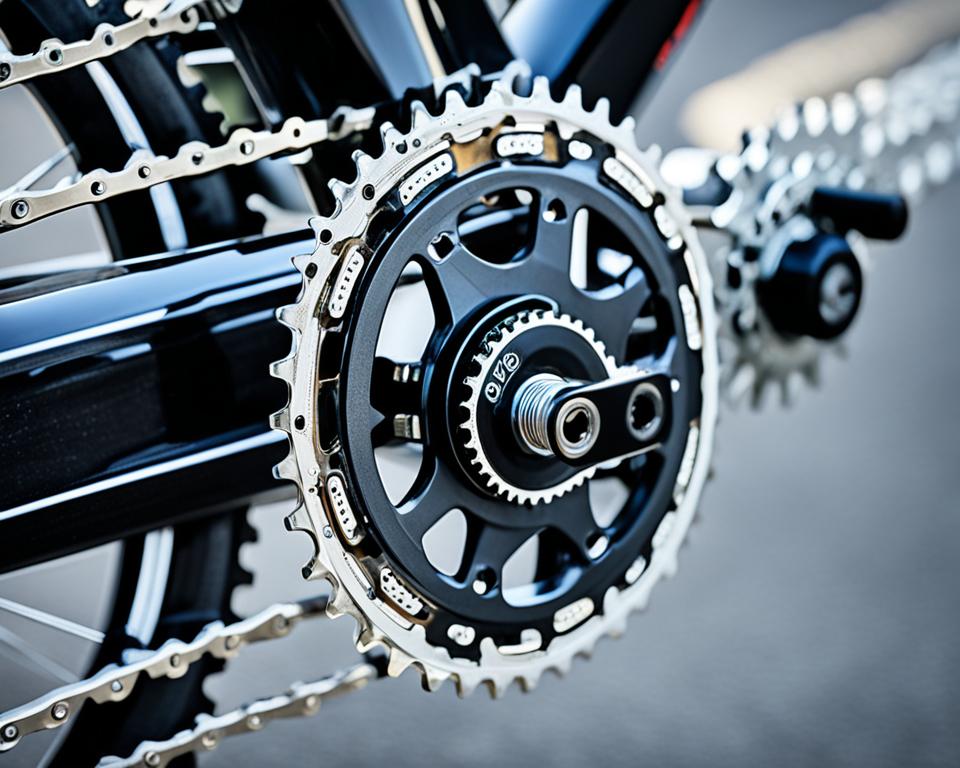I love electric bicycles and know how important it is to understand their parts. The electric bicycle Cassette and Freewheel systems are key to how your bike shifts gears. They affect your bike’s performance.
This article will explain the differences between these two systems. It will help you figure out what your electric bike has. Knowing this can help you choose the right gear, maintain your bike, and upgrade for better riding.
If you’re new or experienced with electric bikes, learning about gear ratios, derailleur system, and shifting mechanism is key. It will improve your control and performance. Let’s explore the Cassette and Freewheel systems together. We’ll get you ready for better rides.
Understanding the Cassette and Freewheel Systems
There are two main types of gearing systems for electric bikes: the cassette system and the freewheel system. They both help change gear ratios. But, they work differently. Let’s look closer at the cassette system, now the top choice for electric bikes.
Cassette System: Modern Gear Range Solutions
The cassette system uses sprockets or cogs that fit on a freehub body. A lockring keeps it all together. This setup gives a wide range of gear ratios for smooth gear selection.
It’s better than the old freewheel system in many ways. It has a wider gear range, letting riders handle different hills and paths. The cassette also makes gear shifting smooth and quick. This makes electric bikes ride better and more efficiently.

The cassette system works great with today’s electric bike gears. It fits well with the latest freehub system technology. This means a smooth and dependable power flow from the motor to the rear wheel.
The cassette system has become the go-to solution for electric bicycle manufacturers, offering riders a more refined and versatile gearing experience.
electric bicycle Cassette/Freewheel: Key Differences
Choosing between a cassette and a freewheel system for electric bikes changes how you ride. These systems have unique features for different riders.
Freewheel systems offer 5 to 7 gear speeds. They have the whole gear cluster on the rear hub. Cassette systems give you 6 to 12 gears. Each cog is attached to a special hub. This lets you shift gears smoothly and is why many choose cassette systems.
How the rear hub is designed is another big difference. Freewheel systems are simpler and cheaper to maintain. Cassette systems are more complex but offer more gears and smoother shifting.
Looking at the cost, freewheels are cheaper. They’re great for those watching their budget or who like simple systems.
Choosing between freewheel or cassette depends on what you need and want. Knowing the differences helps you pick the best for your bike and how you ride.

The choice between a cassette and freewheel system can have a significant impact on your electric bicycle’s performance and maintenance requirements.
Identifying Your Bike’s Gear System
As a cyclist, I’ve found it key to know your bike’s gear system well. It helps with upkeep and upgrades. Knowing if your electric bike uses a freewheel or cassette is vital. It affects what parts and tools you need.
Spinning the Cogs: The Simple Test
To see if your bike has a freewheel or cassette, remove the rear wheel. Look closely. If the tool fits and spins with the cogs, it’s a cassette. If the tool stays still, it’s a freewheel.
Check the hub for another clue. Cassette systems show splines around the hub. Freewheels have fewer splines and a deeper depression. This helps you pick the right tools and parts for your bike.

